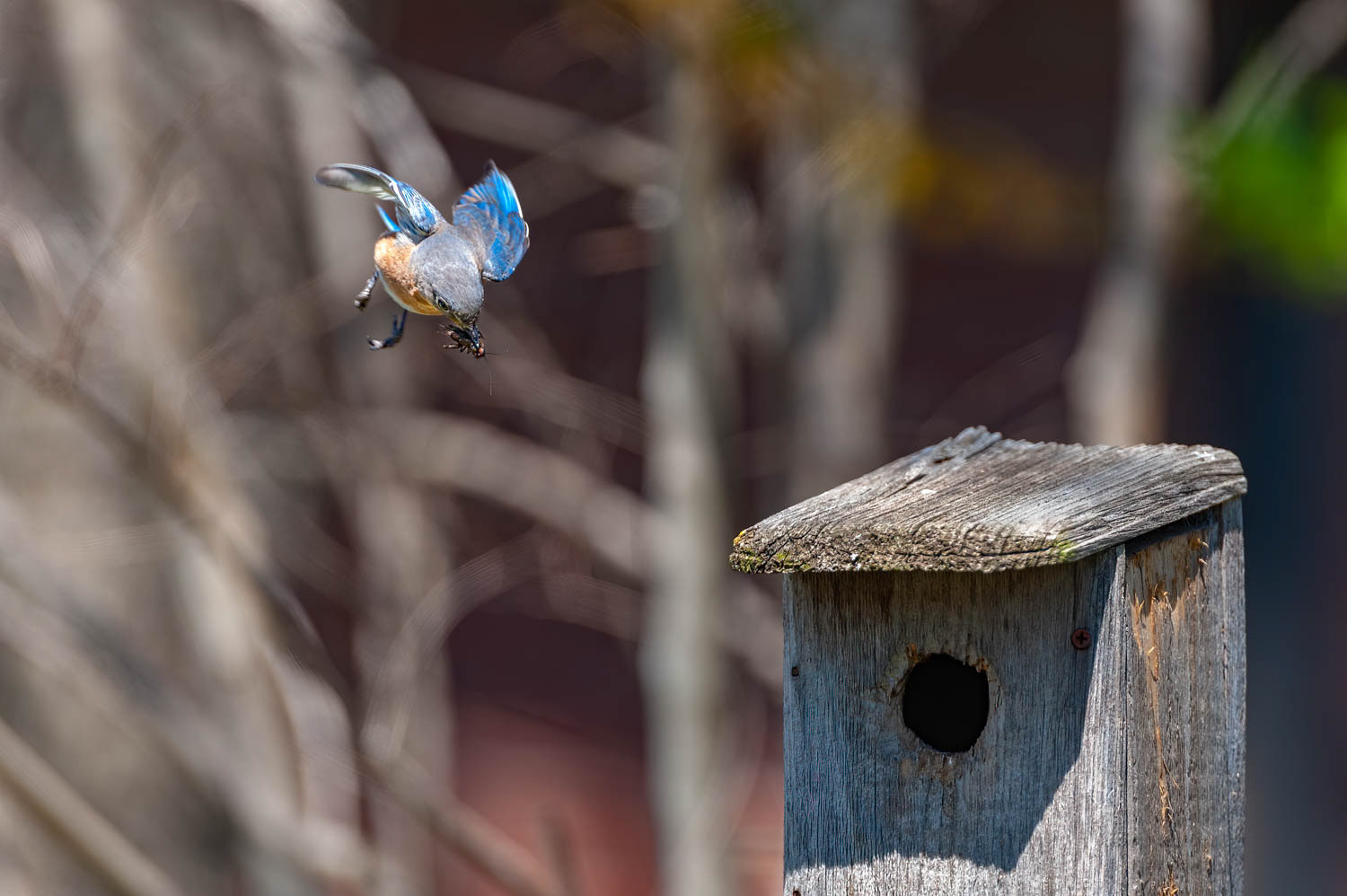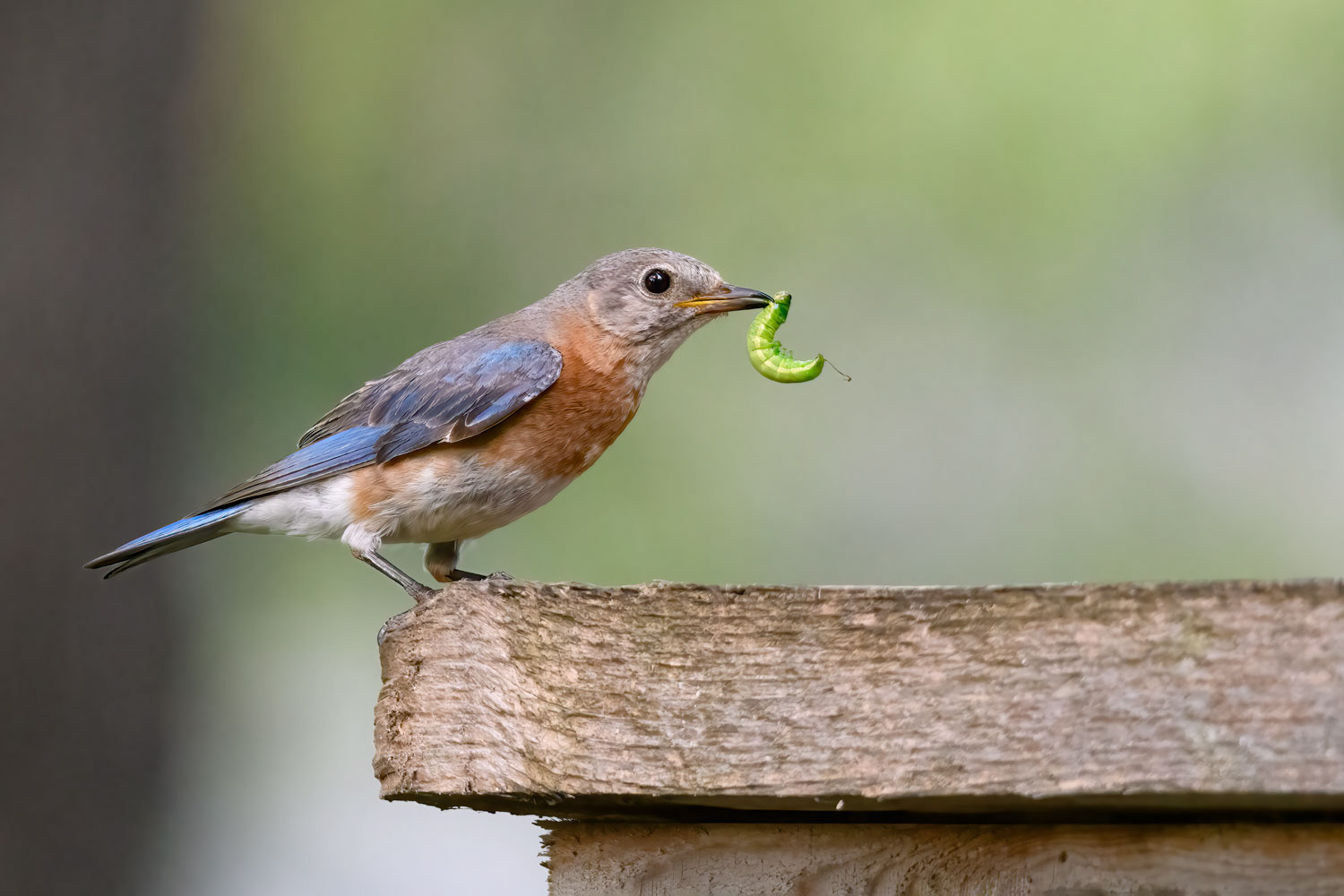
Eastern Bluebird-Male With Mealworms

Eastern Bluebird-Female With Cricket

Eastern Bluebird-Female With Caterpillar
The Eastern Bluebird
The Eastern Bluebird (Sialia sialis) is a small and colorful bird species that belongs to the thrush family. These birds are native to North America and are widely distributed throughout the eastern and central parts of the continent, including Oklahoma. Eastern Bluebirds are a cherished sight to many bird watchers and outdoor enthusiasts due to their striking blue plumage, gentle demeanor, and pleasant song.
Physical Characteristics
Eastern Bluebirds are small birds, measuring about 6.5 to 8 inches (16 to 20 cm) in length and weighing around 1 ounce (28 grams). The male bluebird has a bright blue back, head, and wings, with rusty-red feathers on the breast and sides. The female bluebird is slightly duller in coloration, with a bluish-gray back and wings, and a lighter rusty-red breast. Both male and female bluebirds have a white belly and a short, dark bill.
Habitat and Distribution
Eastern Bluebirds are found in a variety of habitats throughout their range, including open woodlands, fields, meadows, and orchards. They prefer areas with scattered trees or shrubs, which provide perching and nesting sites, and where they can find insects and berries to eat. In Oklahoma, Eastern Bluebirds can be found statewide, but they are most common in the eastern and southeastern parts of the state, particularly in areas with a mix of open fields and woodlands.
Behavior and Diet
Eastern Bluebirds are primarily insectivores, feeding on a variety of insects, including beetles, grasshoppers, caterpillars, and spiders. They also eat fruits and berries, particularly in the winter months when insects are scarce. Bluebirds are cavity nesters, meaning they nest in hollow spaces such as tree cavities, abandoned woodpecker holes, or nest boxes. They often reuse old nests, adding fresh grasses and feathers to line the cavity. Bluebirds are also known for their tendency to build "dummy nests" nearby, which they use as decoys to fool potential predators.
Breeding and Reproduction
Eastern Bluebirds typically breed from March to August, with some individuals producing multiple broods per season. During breeding season, males establish territories and compete with other males for access to nesting sites and females. Once a pair has mated, the female lays 3-7 light blue eggs, which she incubates for around two weeks. After hatching, the chicks are fed by both parents and fledge after about three weeks. Eastern Bluebirds are known for their close bond with their mates and often stay together for multiple breeding seasons.
Conservation Status
Eastern Bluebirds are a relatively common species, but their populations declined significantly in the mid-20th century due to habitat loss and competition with invasive bird species such as the European Starling and House Sparrow. However, conservation efforts, such as providing nest boxes and managing habitats, have helped to increase bluebird populations in recent decades. In Oklahoma, the Eastern Bluebird is not considered a threatened or endangered species, but habitat loss and fragmentation remain significant threats to their survival.
Conclusion
The Eastern Bluebird is a delightful and beloved species, known for its beautiful plumage, sweet song, and gentle demeanor. Their striking blue feathers and reddish-orange breast make them easily recognizable and highly sought after by birdwatchers and outdoor enthusiasts. While they face threats from habitat loss and competition with invasive species, conservation efforts have helped to protect and enhance their populations in Oklahoma and beyond.
